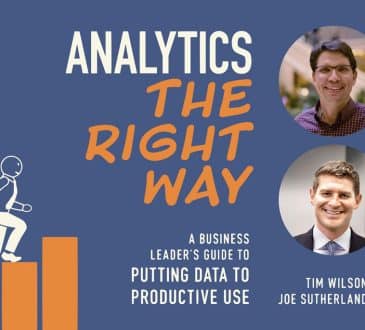Visual Collaboration Is the Future of Work

In an era where remote and hybrid work have become the norm, the ways in which teams collaborate have fundamentally shifted. I had the opportunity to speak with Dave Grow, CEO of Lucid Software, about how visual collaboration tools are redefining the future of work. Lucid Software, a leader in visual collaboration, has been at the forefront of this transformation, helping teams to see and build the future faster through more effective, visual collaboration.
The Challenges of Modern Collaboration
Dave Grow acknowledges the challenges that have emerged with the rise of remote and hybrid work. “Collaboration is now harder than ever for many teams,” he states. He identifies three primary pain points:
- Loss of Personal Connections: The natural interactions that occur in a physical office are missing, making it difficult to form the deep personal relationships that underpin effective teamwork.
- Fragmented Tools and Context Switching: Teams have adopted numerous technologies to bridge the gap left by in-person meetings. However, this has led to workers toggling between apps up to 1,200 times per day, causing distractions and overwhelming feelings.
- Lack of Alignment and Productive Meetings: The old ways of working together and sharing ideas in person are no longer viable. Consequently, teams fill their calendars with unproductive meetings that lack structure and accountability.
Addressing Meeting Fatigue and Enhancing Asynchronous Communication
One solution to these challenges is the strategic use of asynchronous communication. Dave emphasizes the importance of establishing clear norms around communication methods. “We need to decide when to meet, when to be in person, and what communication can happen via Slack, Teams, or email,” he explains. He also stresses the need for making meetings more valuable and effective, which can reduce the number of meetings overall.
Asynchronous communication can replicate some of the spontaneous interactions that happen in an office. For instance, using an application like Lucidspark, teams can prepare for meetings by sharing ideas and feedback on a virtual whiteboard beforehand. This way, when they come together, either virtually or in person, they can dive straight into deeper discussions and decision-making.
The Role of Visual Collaboration
Visual collaboration is at the heart of Lucid Software’s offerings. Dave explains that visual tools are particularly effective for complex tasks such as ideation, planning, and process design. “Describing a process in text alone can get really complex, really fast,” he notes. Visualizing these processes makes them easier to understand and collaborate on.
Dave also points out that while text-based communication is useful for simple day-to-day interactions, it should be complemented by visual collaboration. For example, brainstorming sessions are more productive when team members can see and interact with ideas on a shared canvas rather than just talking about them.
The rise of AI, including both text-based and image generation tools, is poised to further transform visual collaboration. Dave sees AI as an opportunity to enhance how visuals are created and interacted with. “Some users will want to type or talk out their ideas and have them visualized quickly, while others will prefer the traditional drag-and-drop format,” he says. AI can assist in formatting and structuring visuals, making it easier to convey information compellingly.
Reinventing Work for the Future
Looking ahead, Dave urges leaders to commit to reinvention. The initial response to remote work was often to replicate in-person processes via video conference, which is insufficient. He advocates for a deliberate rethinking of how work and collaboration are conducted.
Investing in manager training is also crucial. Managers play a more elevated role in remote and hybrid work environments, and they need the right skills and understanding of AI and other technologies to lead effectively. Indeed, when I work with clients on overcoming frustrations with both hybrid work and generative AI, manager training is at the forefront of such discussions.
Lastly, Dave advises companies to rationalize their technology stacks. Many teams have adopted disparate technologies in recent years, and now it’s time to streamline and choose the most effective tools. Lucid’s end-to-end visual collaboration platform is designed to replace multiple point solutions, reducing context switching and enhancing productivity.
Conclusion
As visual collaboration becomes increasingly central to modern work, businesses must ask themselves why they aren’t leveraging these tools. According to Gartner, by the end of 2024, visual collaboration applications will be at the center of 30% of team collaboration experiences. If your team isn’t already using visual collaboration tools, now is the time to start.
Dave Grow’s insights highlight the transformative potential of visual collaboration. By addressing modern collaboration challenges, enhancing asynchronous communication, embracing AI, and committing to reinvention, businesses can build a more connected, productive, and innovative future of work.
Have you read?
Karri Alameri Appointed as New CEO of Oma Savings Bank Plc.
Crypto Billionaire Zhao Changpeng Eyes New Ventures After Release.
Sharjah is the Rising Haven for Expats Amid Dubai’s Soaring Rents.
Qonto Expands Across Europe to Support SMEs and Freelancers.
Robert Gilby Steps Down as Dentsu APAC CEO.
Bring the best of the CEOWORLD magazine's global journalism to audiences in the United States and around the world. - Add CEOWORLD magazine to your Google News feed.
Follow CEOWORLD magazine headlines on: Google News, LinkedIn, Twitter, and Facebook.
Copyright 2025 The CEOWORLD magazine. All rights reserved. This material (and any extract from it) must not be copied, redistributed or placed on any website, without CEOWORLD magazine' prior written consent. For media queries, please contact: info@ceoworld.biz








